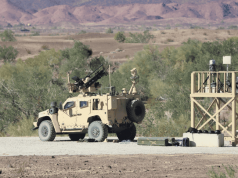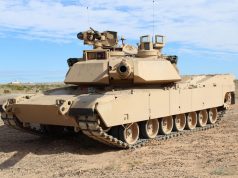
The US Army has issued a request for whitepapers for a high energy laser system that would be able to detect and neutralize class 1 and 2 UAS threats at standoff ranges.
As explained in the announcement issued on the federal government contracting site, the Army Rapid Capabilities and Critical Technologies Office (RCCTO) is looking to integrate a government owned high energy laser (HEL) subsystem with a power and thermal subsystem and sensor package to demonstrate increased lethality in negating sUAS.
The counter-small unmanned aerial system high energy laser (C-sUAS HEL) system will be demonstrated in a relevant environment and must show increased magazine depth while reducing operational costs, risk of interfering with untargeted systems, and risk of collateral damage when compared to other C-sUAS Block 0 systems.
Some of the requirements for the system include the ability to detect and characterize class 1 and 2 UAS threats at standoff ranges, and possess hard-kill capability against class 1 and 2 UAS using a high energy laser at standoff ranges with high reliability. The army would also like the system to be capable of defending fixed and semi fixed sites.
RCCTO further said it expects the prototype project to transition to a follow-on production/sole source FAR-based contract or other transaction agreement. It state, however, that the quantities or dollar values are not fully known at this time.
The request for papers comes after the US Department of Defense released its C-sUAS strategy in January this year. The department earlier selected the army to lead and direct efforts for identifying and prioritizing joint gaps and C-sUAS solutions.
The strategy was released in response to the exponential growth of small unmanned aircraft systems (sUAS) that create new risks for US Armed Forces. Technology trends are dramatically transforming legitimate applications of sUAS while simultaneously making them increasingly capable weapons in the hands of state actors, non-state actors, and criminals. Small UAS may also pose hazards to DoD operations in the air, land, and maritime domains when controlled by negligent or reckless operators.


























